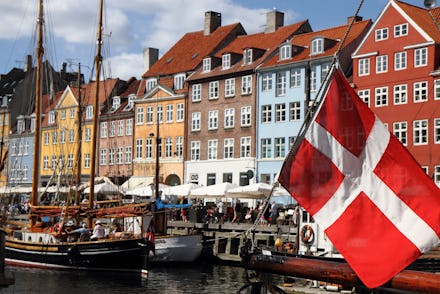This Country Is Literally Paying Students to Go to College

In the U.S., many students pay upwards of $60,000 per year for college. In Denmark, the government pays its students to attend college.
According to a report in the Washington Post, under the Statens Uddannelsesstøtte program, all Danes over the age of 18 are entitled to funding from the state for up to six years for post-secondary education. Every student who doesn't live with their parents receives about 5,839 Danish krones (about $900) per month, and they do not need to pay the state back — even if they drop out of college — according to the Post. High-performing students have even more funding opportunities.
While American students lie at the mercy of a national tuition arms race and agonize over the prospect of lifelong debt, Danish students can choose their courses and career path without financial anxiety. Denmark should be an example for U.S. policymakers as they grapple with how to address the rising cost of higher education.
The way it works: The SU monthly stipend is a product of the Scandinavian social democratic model, which uses exceptionally high tax rates to finance robust social services from childcare to state-of-the-art public transportation. Denmark tops the charts among the affluent countries in the Organization for Economic Co-operation and Development for its personal income tax rate on its highest earners — around 60%.
"The aim of the support scheme is to ensure that it is not the social and economic standing of potential students but abilities and interests that decides about educational success," Mads Hammer Larsen, a press spokesperson for the Danish Ministry of Education, told the Post.
Conservative critics of Denmark's model for financing higher education have argued that the generosity spoils students, leading them to fixate on the comforts of a meaningful career at the expense of the job market. Enrollment for engineering is about one-third of the average for members of the Organisation for Economic Co-operation and Development, and arts and humanities programs are widely popular, according to Agence France Presse. But Denmark's youth unemployment rate is in fact lower than most of Europe's, as well as the U.S. rate, as the Post notes.
There is scant evidence that making college a comfortable financial experience is destroying the next generation of Danish workers. In fact, given its high educational performance stats, it seems that graduates are entering the workforce quite well.
A nation of debtors: The Danish model and the American model are universes apart. A 500% increase in college costs in the past 30 years has caused both prospective and former students to contemplate higher education through a new lens that.
While Danish graduates are largely debt-free, about 70% of 2013 American graduates left college with an average of $28,400 in debt, according to a 2014 report by the Institute for College Access and Success reported by U.S. News. Among public colleges that it classified as high-debt, average debt levels ranged $33,950 to $48,850; among the nonprofit colleges it ranked high-debt, money owed was between $41,750 and $71,350.
This map from U.S. News shows the average student loan debt by state:
In 2014, the rate at which students defaulted on their loans was 13.7% — down one percentage point from the previous year, but still extremely high. Default rates are a useful measure of insight into both the usefulness of a degree in the job market and the imbalance between cost of education and the returns provided on that investment.
About 40 million Americans hold a combined $1.2 trillion in student debt. For many, the costs are personally crippling — the interest rates on high sums make repayment a Sisyphean task. Others will manage to pay (over the course of decades) but be significantly less likely to make bigger investments in things like housing that have been essential to the postwar American economy. And the reality is that college is still a worthy investment as a means for attaining higher pay and a better job.
But more and more disillusioned workers are looking across the ocean to see high-quality education for little or no cost, and beginning to ask if any of the mess they find themselves in is necessary at all.
h/t Washington Post